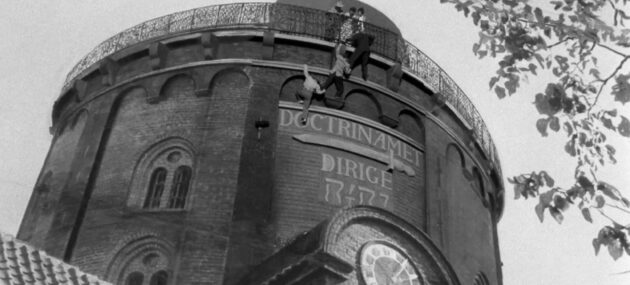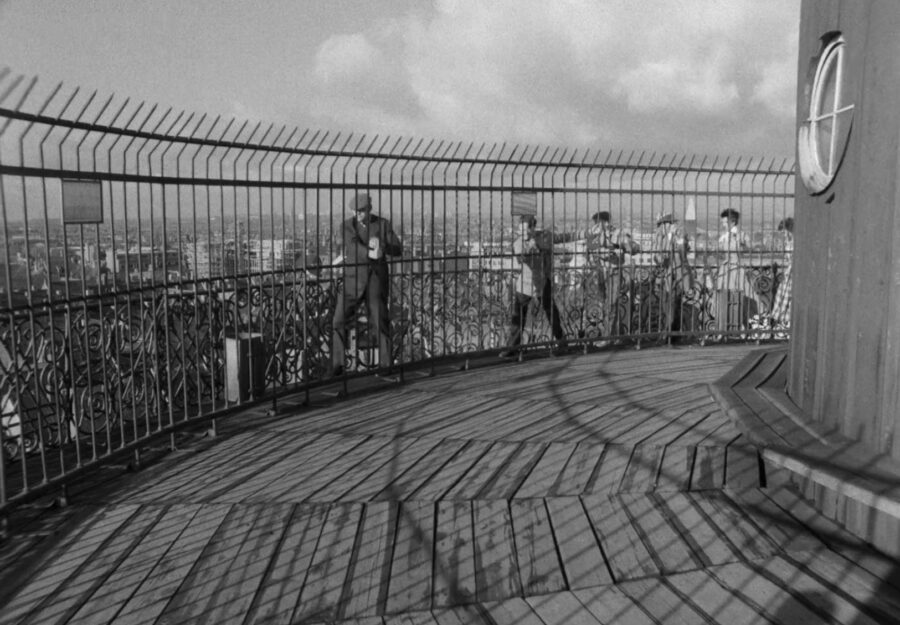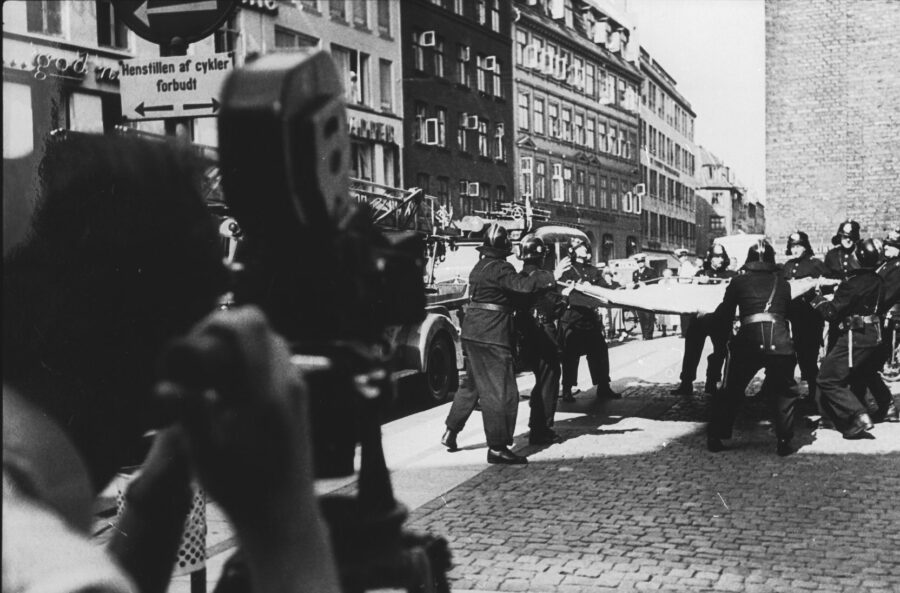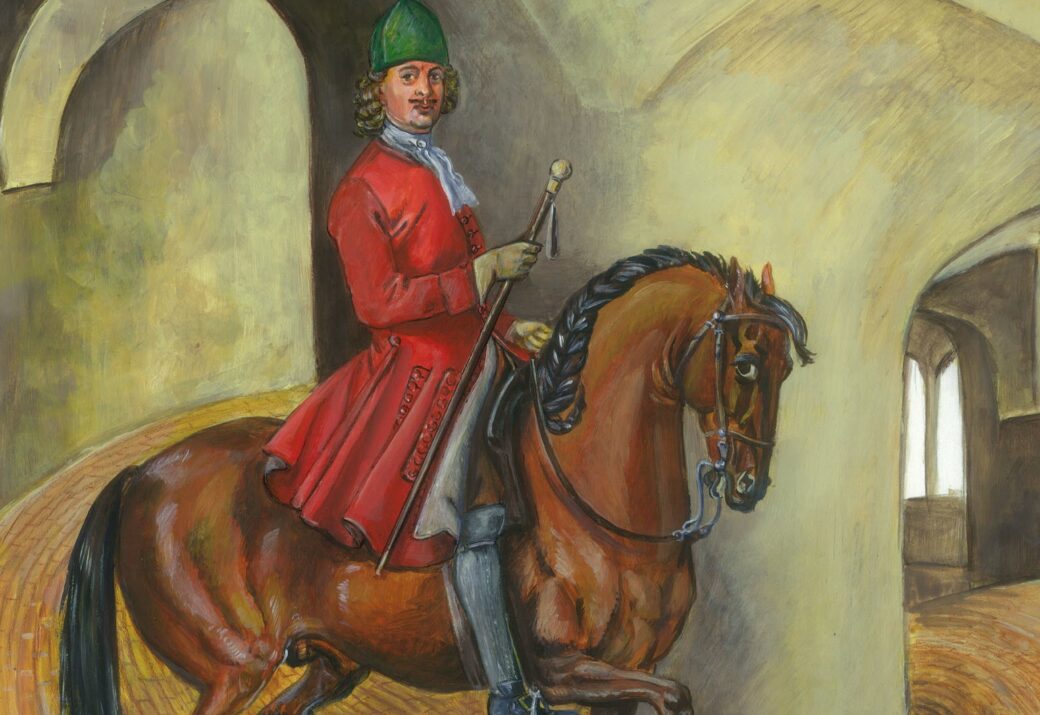This website uses cookies so that we can provide you with the best user experience possible. Cookie information is stored in your browser and performs functions such as recognising you when you return to our website and helping our team to understand which sections of the website you find most interesting and useful.

It Happened at the Round Tower
The Round Tower is obviously a tower, but it is also a joyous dance restaurant with a cloakroom attendant, a house band and a jitterbug contest. At least it is so in Poul Bang’s (1905-67) 1955 cinematic comedy It Happened at the Round Tower (Det var paa Rundetaarn), which has two of its main characters both playing trombone and accordion in the band and acting as the enthusiastic singers performing the captivating signature tune.
It Happened at the Round Tower is a comedy and even the cast list, which appears in the beginning of the film at the same time as we get a panorama of the city shot from the Round Tower’s viewing platform, is cheerful. For instance, this is where we learn that the actor Kjeld Petersen (1920-62) plays the role of barrister Viggo Hartsen, while a Chevrolet Bel Air, i.e. a car, plays “the great love of his life”. We also find out that Dirch Passer (1926-80) and Ove Sprogøe (1919-2004), who formed one of the most popular duos in the country at that time, act as the trombonist and the accordionist.
Portrayal of a Time
The plot of the film is not too complicated. In fact, the summary that Dirch Passer wrote in a letter to Ove Sprogøe prior to filming, pretty much says it all. “We play two musicians who come across a lot of difficulties and, in the end, get two lovely girls. In short, everything we hope for”, he wrote.“To get an overview requires a certain height and it stands to reason that the Round Tower has this quality”
Complications are often accompanied by confusion in popular comedies but, taking the coincidence of names between the tower and the dancing restaurant into account, surprisingly few confused incidences occur. No jitterbug dancers mistake the address and show up for an acrobatic dance in the Spiral Ramp, and no newly appointed astronomer tries to gaze at the stars from the restaurant’s dance floor. Instead, we get to see some nice images from inside the real Round Tower and it is not without reason that one film guide in its review of the film has included a small symbol, which indicates that it offers an exceptionally good portrayal of that period in time.

Happy Students
This also applies to other films that have the Round Tower on the cast list in shorter or longer sequences. There are several of them, but the old tower often plays a very small part. In the screen adaption of Jens Christian Hostrup’s Singspiel The Opposite Neighbours (Genboerne) from 1939, for instance, it becomes apparent that part of the story takes place at the dormitory Regensen, which is located across the street from the Round Tower, when we see the Round Tower behind the linden tree in Regensen’s courtyard in the film’s opening sequence. In the comedy Charles’ Aunt (Charles’ tante) from 1959, which also stars Dirch Passer and Ove Sprogøe, the same effect is achieved by letting a horse-drawn carriage drive past the tower in one of the first scenes of the film.
In the film In Love in Copenhagen (Forelsket i København) from 1960 it is also only possible to catch a dim glimpse of the Round Tower in the silhouette of the city, when the couple in love float across the sky in a detached gondola from a Ferris wheel. The tower gets a little more screen time in Father of Four and Uncle Sofus (Far til fire og onkel Sofus) from 1957, which was the fourth film in the popular family comedy series Little Per (Lille Per). At the beginning of the film the aforementioned uncle is arriving in Copenhagen by plane. Whilst looking down at the city, the person next to him bursts out nostalgically, “There it stands, the Round Tower”, in response to which the uncle replies snappishly, “Of course the Round Tower stands. We haven’t had any earthquakes, surely?”
The Round Tower For Sale
When the Round Tower appears in a film, it is mainly as a marker of the location in which the story takes place, whether this is Copenhagen in general or more specifically the city’s old Latin quarter. It goes without saying, that the Round Tower is an inalienable part of the capital city’s profile.
Hence, much of the humour in the beginning of the film Me, Too, in the Mafia (Mafiaen – det er osse mig) from 1974 derives from the unthinkable idea that the Round Tower should be moved to somewhere outside of the city. In the film, we see how the fraudster Dirch Passer invites an oil sheikh to the Round Tower and makes the low-voiced pun “Now is the time to wiggle” in the Spiral Ramp, whereafter he tries to sell the tower to the sheikh for $ 10 million. As one of his sales pitches says, the sheikh will be able to get “an excellent overview of all his oil towers” from the Round Tower.

Worth Watching
To get an overview requires a certain height and it stands to reason that the Round Tower has this quality even though it is far from being the tallest tower in Copenhagen. Still, the tower goes so high up in the air that it was considered best to build a replica of its upper floors for the shooting of It Happened at the Round Tower. In the climax of the film a bag filled with money lands on an iron anchor that is sited on the tower’s façade and some of the actors are climbing around the famous rebus. To avoid danger the climbing was shot, to be sure, on the replica with the short distance to the ground.
The replica was built in the garden of the film studio Saga Studio, which was located in a large villa on the street Annettevej in Charlottenlund north of Copenhagen. However, a good deal of the shooting was also done inside the Round Tower itself. This includes the scene where Dirch Passer makes a fast-paced trip down the Spiral Ramp in a pram he stumbles into on his way down from the viewing platform.
The roller coaster ride down the Spiral Ramp was repeated at a calmer pace 30 years later in the film Walter and Carlo, Part II, Yes, It’s Daddy (Walter og Carlo 2 – yes, det er far) from 1986. Here, Walter lets go of an antique wheelchair from which Carlo has tried to sell “reading material on the Round Tower”, as it is called. This time, the ride takes place without the wonderful signature tune from It Happened at the Round Tower, which is worth watching the whole film for, especially when Dirch Passer and Ove Sprogøe sing the refrain at full blast in the end:
“It was at the Round Tower, I found my happiness,
the last part of the walk up my heart was pounding with giddiness.
At first, I thought it was
the difficulty of the steep walk to the platform above,
then it dawned on me,
it was just caused by love.
We stood looking down on the throng in the city,
then you smiled to me – and I became giddy.
On Sunday, when the two of us once again go out during the evening hour,
we shall take the trip up the dear old Round Tower.”


